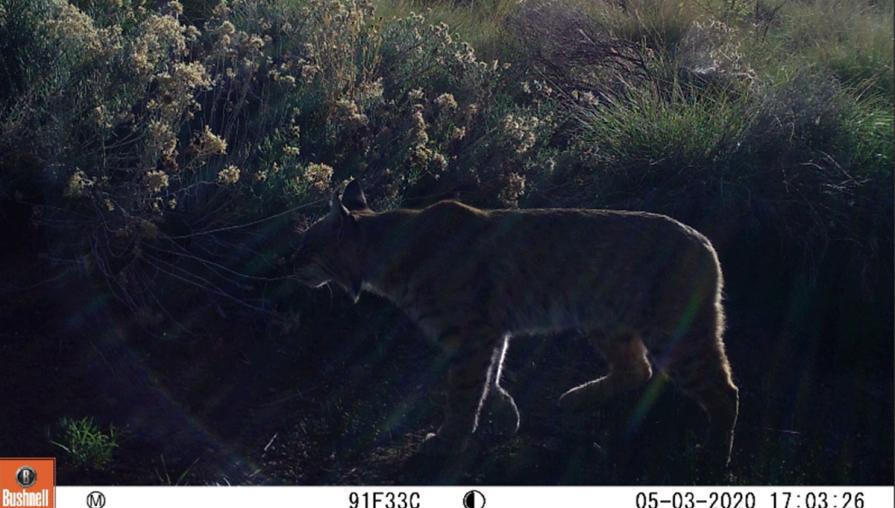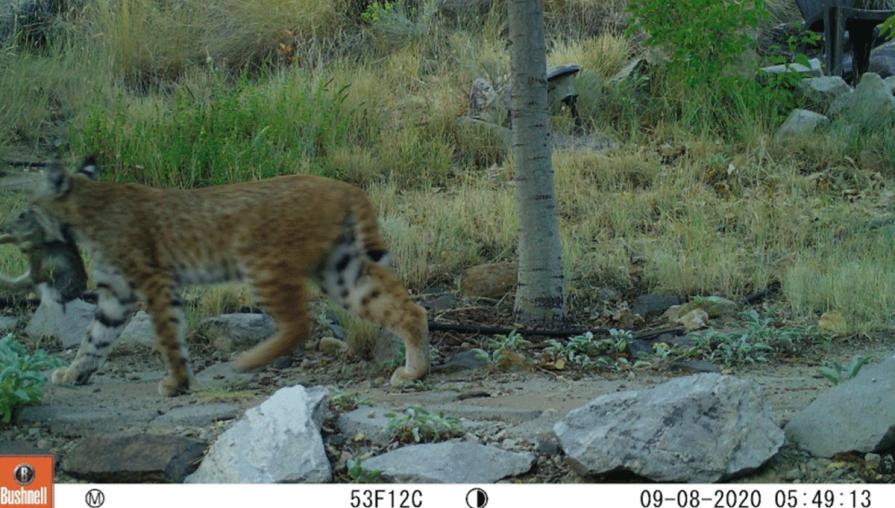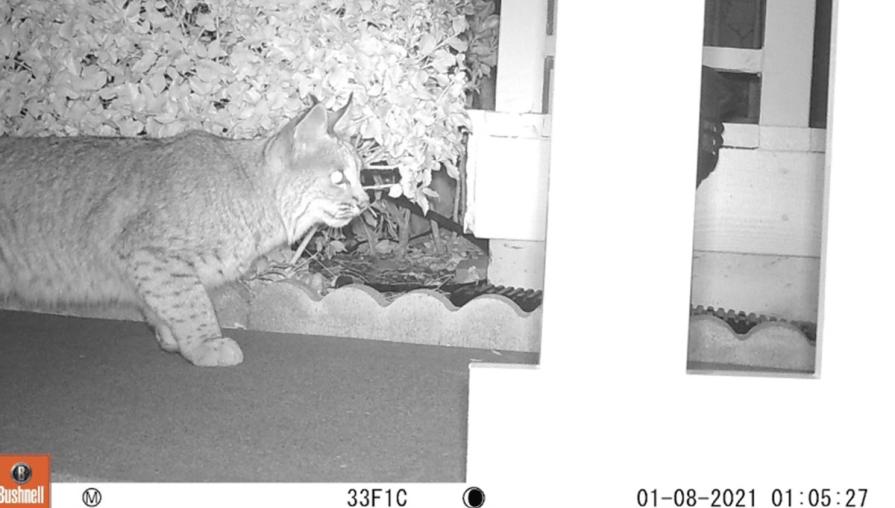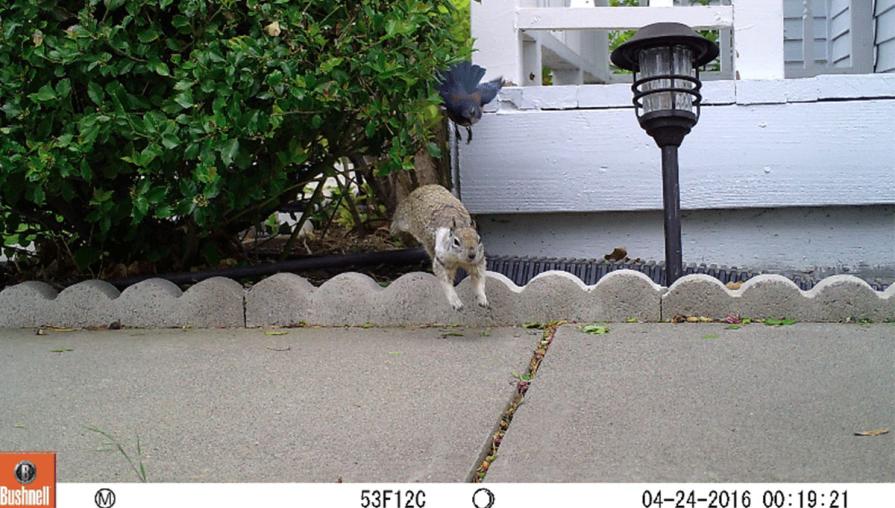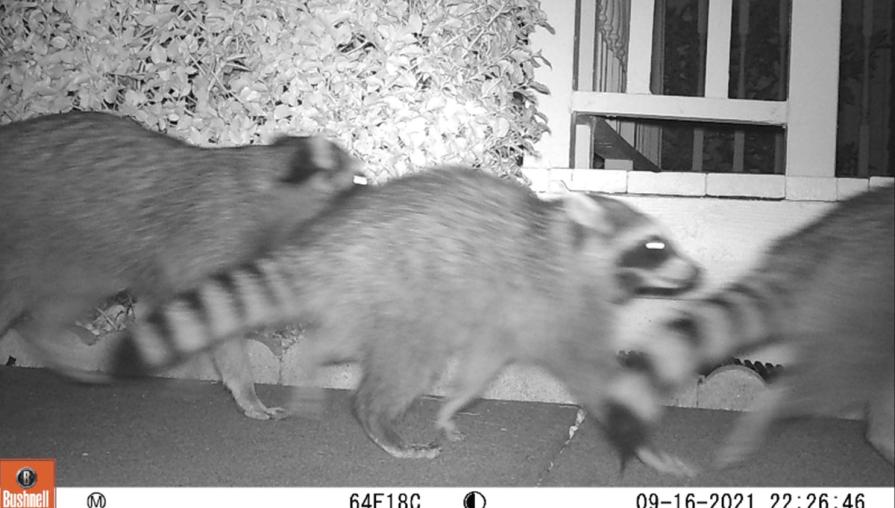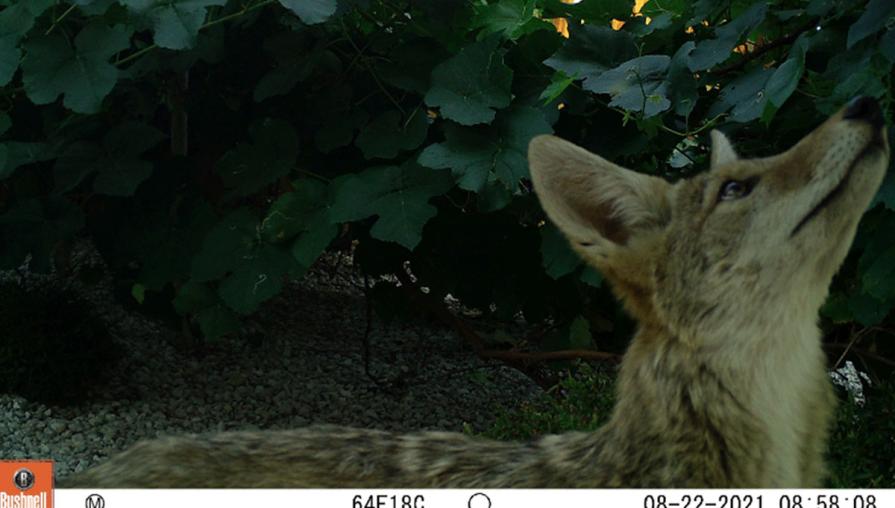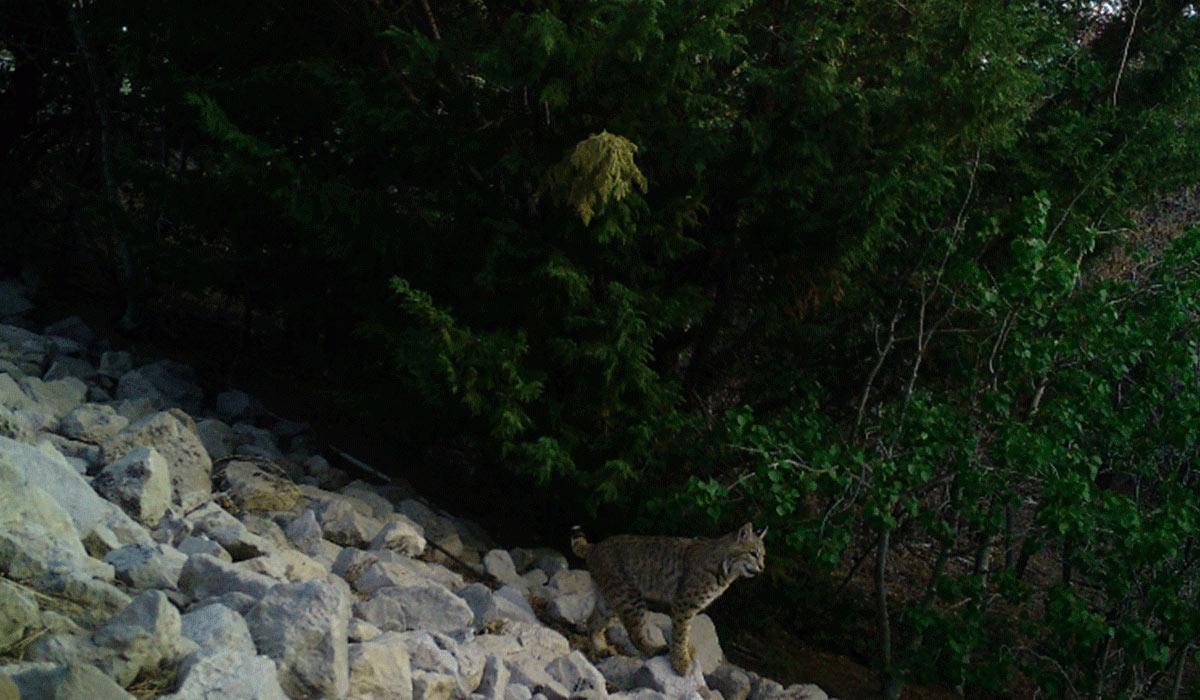
TMCC student Colin Willis has lived in the Reno-Sparks area for his entire life and has never seen a lynx rufus, otherwise known as a bobcat. “I’ve always been a major fan of wildlife, and I am interested in Wildlife Sciences,” Willis said, so when his biology instructor mentioned that an opportunity to assist with an ongoing bobcat study was available to interested students, he signed up.
Willis, who’s now in his second year at TMCC studying Environmental Science and plans to transfer to UNR to complete a degree in Wildlife Ecology and Conservation, has been helping TMCC Biology Professor Dr. Meeghan Gray with her study into bobcat populations in Northern Nevada. Willis was joined by TMCC High School student Marley Anderson who also heard about the opportunity in her Biology class. “I thought it would provide me with good experience and insight into a real research project,” Anderson said. “I was already exploring internship opportunities within the field of science, so this was an amazing chance that I had to take.”
Two years ago, Gray installed game cameras in various locations around West Reno, including homes in Verdi, Caughlin Ranch and Galena to begin “camera trapping” as the first phase in her study of bobcats in urban environments. Since so little is known about bobcats in the state, Gray’s work will provide the scientific community a glimpse of this elusive predator, and a better understanding of their movement and behavior patterns.
Students like Willis and Anderson have helped Gray to gather and sort what has been an immense amount of images—some that contain bobcats, but most don’t. “When I first started helping with the project, I went through all the images that the camera traps had taken, tagging the ones that had bobcats in them. And then at the first of every month, I would switch out the SD cards,” Willis explained.
The tough part? The camera traps capture only slightly more images of bobcats than a person might see: which is to say, not many. Yet, when you see one, the excitement is undeniable.
Camera-Trapping to Real Trapping
Patience goes hand in hand with biological research, and Anderson admits that having patience has been one of the more challenging aspects of the project. “We faced a few setbacks waiting for supplies and materials, but we passed the time with more research,” Anderson said. “It’s such an exciting project... and it has facilitated the growth of my own aspirations. I can see myself becoming a field scientist or researcher.”
As of Jan. 2022, Dr. Gray has been camera-trapping bobcats for two years through the ongoing pandemic with the help of TMCC students. “We’ve gotten hundreds of photos of cats and literally thousands of photos of lots of other animals—we’ve documented bears, deer, coyote, raccoons, and skunks, to name a few,” she said.
Two years of camera trapping have revealed some interesting insights into these elusive predators: when they are the most active, both in terms of the time of day and seasons of the year. According to Gray, so far the cameras have captured the most images of bobcats between midnight and 4 a.m.
“That’s not terribly surprising,” Gray said. “However, we do sometimes get daylight shots of them—but just not in the middle of the day. We sometimes see them in the early morning or right when the sun is about to set.”
Gray also remarks that camera-trapping sightings tend to be seasonal. “When we look at our monthly and seasonal patterns, we see a real decrease in summer and a huge increase in the winter,” Gray explained. “Yet, we don’t know if that’s because the bobcats are going to use the urban environment more in the winter because food is scarce elsewhere, or are they just less active in the summers? At this point, we really don’t know.”
They say an image carries over a thousand words, but in terms of observing a species about which so little is known, camera trapping has left Gray and her students with many unanswered questions: What are bobcat movement patterns? Are they moving into our urban environments or out of them?
To answer questions like those, the second phase of Dr. Gray’s bobcat research will involve actually trapping bobcats, taking blood samples and fitting the animal with a GPS collar. “We want to understand their movement patterns and diseases, if they have any,” Gray said, explaining that any information that could point to these larger patterns would be useful knowledge to have. “None of this data has been looked at in any population of bobcats in the state, which makes it particularly interesting.”
And, needless to say, exciting.
Adult North American bobcats typically weigh between 13-30 pounds, stand up to 21-inches high, and can be up to 50-inches long; while not the largest of the wild cats, they are nonetheless considerably larger than a domestic housecat and probably quite formidable (ask any cat owner who’s tried to put their cat in a box or carrier to take them to the vet knows exactly how formidable that could probably be.)
Yet, Gray and her team have protocols and a plan in place. “I’ve helped to design the protocol for how to handle sedated bobcats if we do trap any, to maintain a safe and humane environment,” said Anderson, who also assisted with setting up the traps before winter break.
For the second phase of her ongoing inquiry and research into the local bobcat population, Gray’s team is also working with Wildlife Biologist Jack Spencer of the USDA Wildlife Services and Veterinarian Dr. Mike Teglas from the University of Nevada, Reno who will assist with the trapping, measuring, sampling and collaring process.
“We currently have traps set and open, so that if a bobcat walks in, the door will fall behind them,” Gray explained. Once a trap’s door closes, she receives an alert on her phone. The traps, which have been set up for a little over a month still remain empty, but according to the available research, Gray said that was to be expected.
“Bobcats are very, very elusive. And we are trapping them in the most humane, least stressful way we can for the cat. So, the tradeoff is that it might take us more time, because we are being mindful about what is best for the welfare of the animal,” she said.
However, once an animal is captured, Gray, Spencer, Teglas, and the participating students would sedate the animal in order to take a blood sample, measurements, and to fit the GPS collar before reviving the animal and opening the trap so it can return to its environment. Gray estimates the process would take no more than an hour.
“I hope to turn this research into a long-term project, something that we can continue year after year, so students can be involved and experience something as rare as seeing these animals up close and understanding more about them,” she said.
Getting Involved In Bobcat Research
Willis and Anderson have learned how to follow a specific protocol to document bobcat sightings, which would indicate where they resided and when they tended to show up. They also analyzed bobcat DNA from bone fragments that came from a bobcat jaw that Dr. Gray was given by NDOT. “That was really cool—I wasn’t expecting to do anything like that. In all, this entire research project has been a really great learning experience, as well as a lot of fun,” Willis said.
It doesn’t get any more real than this: Gray’s research is providing students with opportunities to learn more about the process of researching large wildlife, while contributing to the larger body of scientific knowledge that we have about bobcats that, according to the data so far, may very well be in your backyard.
If you have taken or are taking Biology 190 or 191 and have an interest in wildlife biology or learning more about bobcats, Dr. Gray is looking for additional student volunteers to assist with the ongoing research project. You can be in your first or second year at TMCC and be available for in-person work (gathering SD cards or completing other fieldwork for the project) on Friday mornings. More information about the project can be found on Dr. Gray’s faculty website.
Willis said that the experience has helped him to realize he’s chosen a major and a career path that’s the right fit for him. “If you see a project like this that interests you or relates to a field you’re trying to get into, go for it. This has been a great learning experience, and I know I’m going down the path that I want to go down.”
For more information about studying biology at TMCC, contact the department at 775-673-8251.







